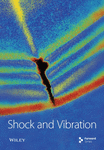Evaluation of the Performance of Three Different Methods Used in the Identification of Rigid Body Properties
Abstract
The identification of the rigid body properties of a structure is an important matter in various structural dynamic applications, namely in structural modification (coupling/uncoupling), optimization and vibration control. In most situations, the experimental route is the only via to obtain the desired dynamic properties. This goal is achieved by an inverse process which starts from the measurement of Frequency Response Functions (FRFs) and ends on matrices describing the mass distribution of a rigid body.
The objective of the present article is the evaluation and comparison of the performance of three different kinds of identification methods that share a common characteristic – they all use FRFs as inputs to the inverse process. One of them, the Inertia Restraint Method (IRM) makes use of the accelerance FRF (information condensed at zero frequency), while the other two methods make use of receptance FRFs as inputs, although in different manners; in one of them the properties are evaluated directly from the measurement data – Direct Physical Parameter Identification Method (DPPIM) – whereas the other type requires a modal identification procedure as an intermediate step – Modal Method (MM). An actual experimental structure forms the case study to illustrate the performance of the three different techniques.




